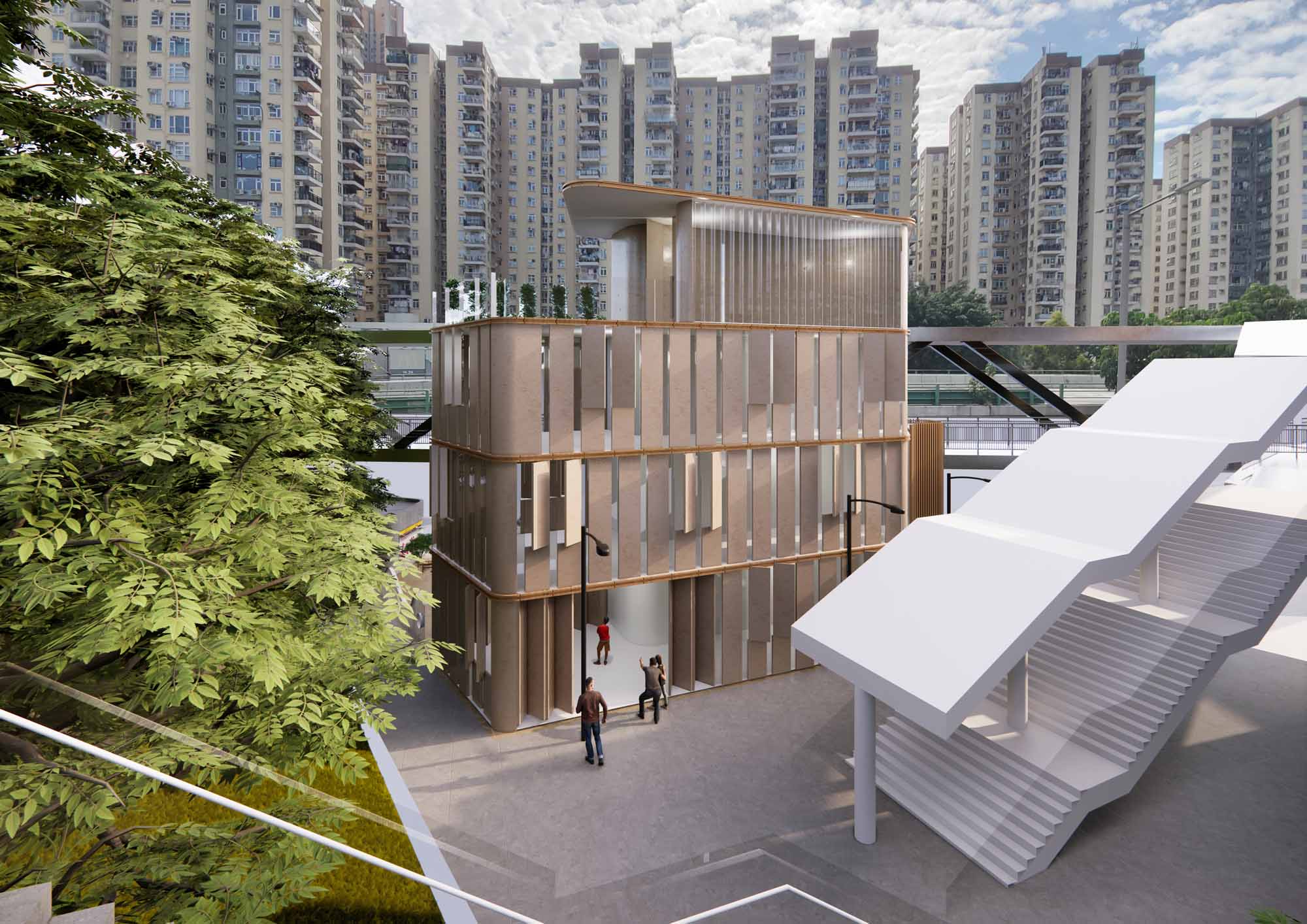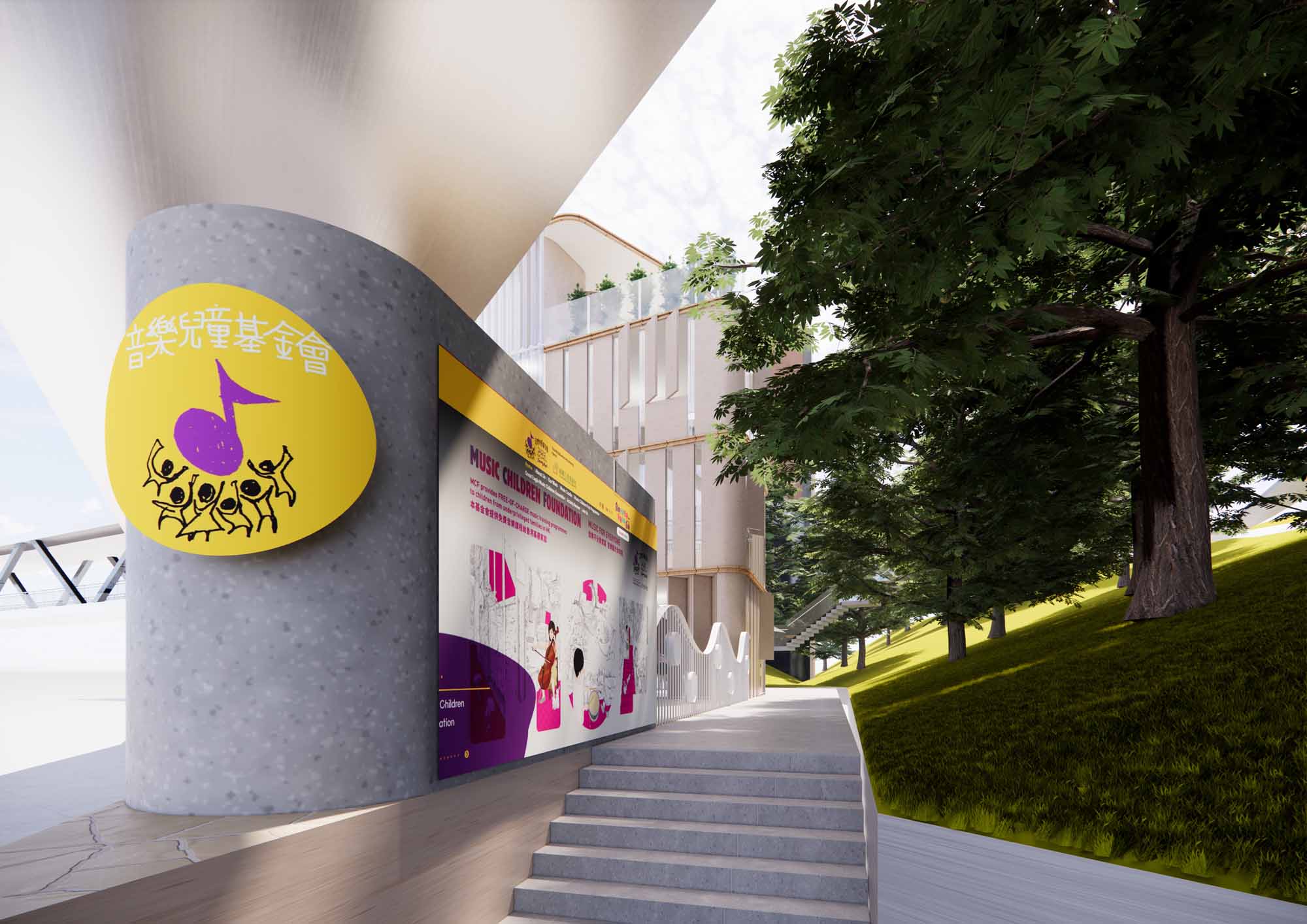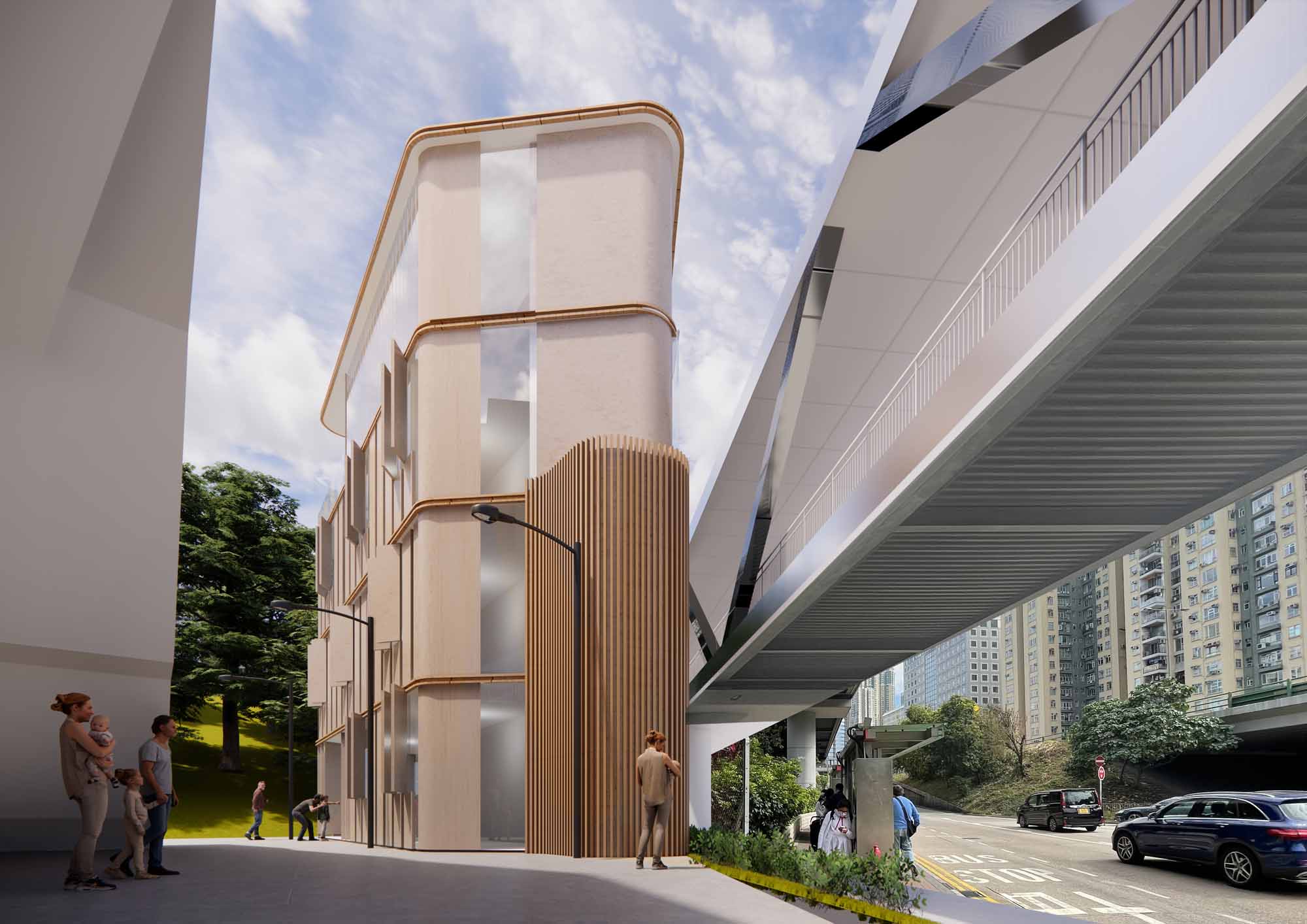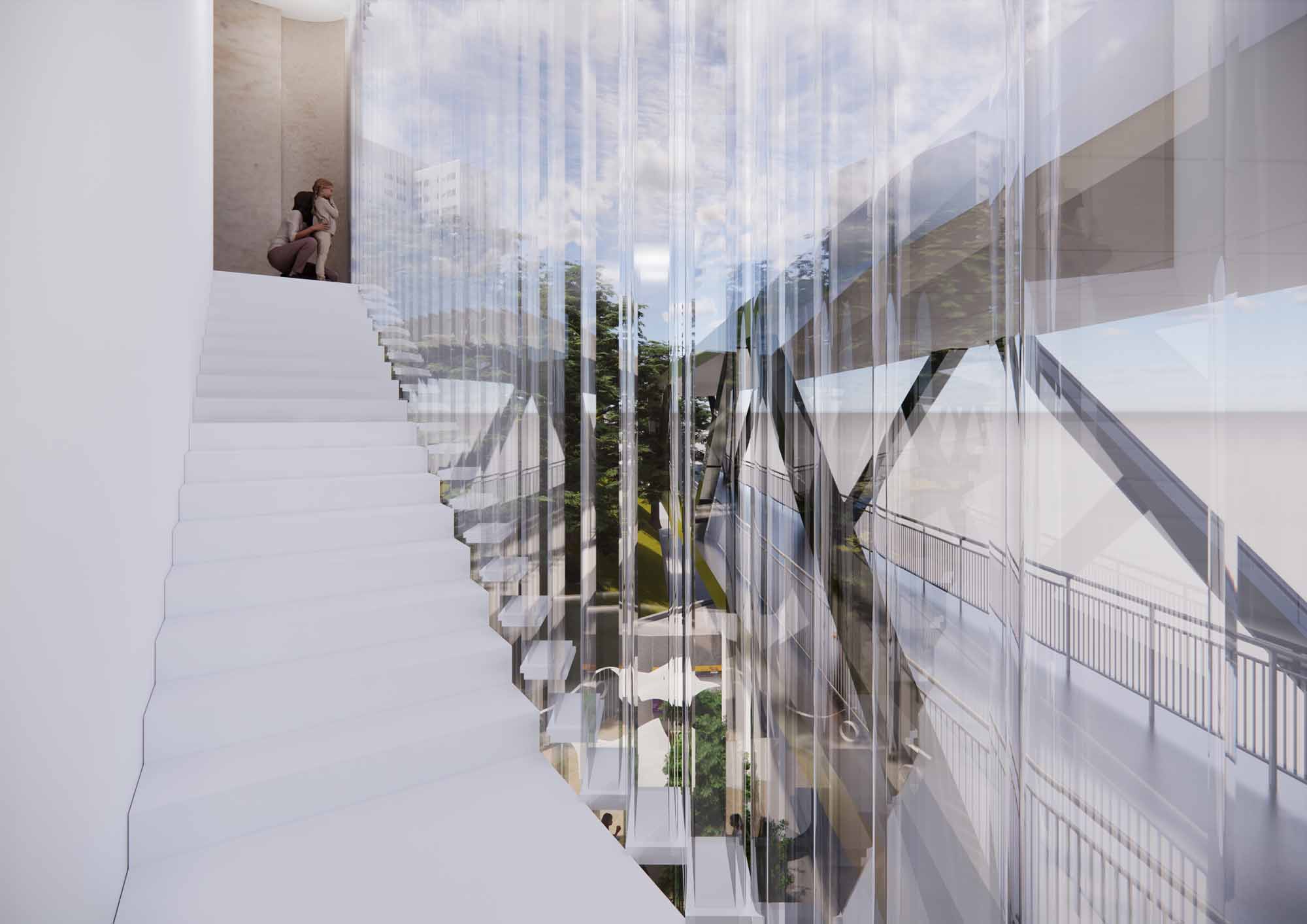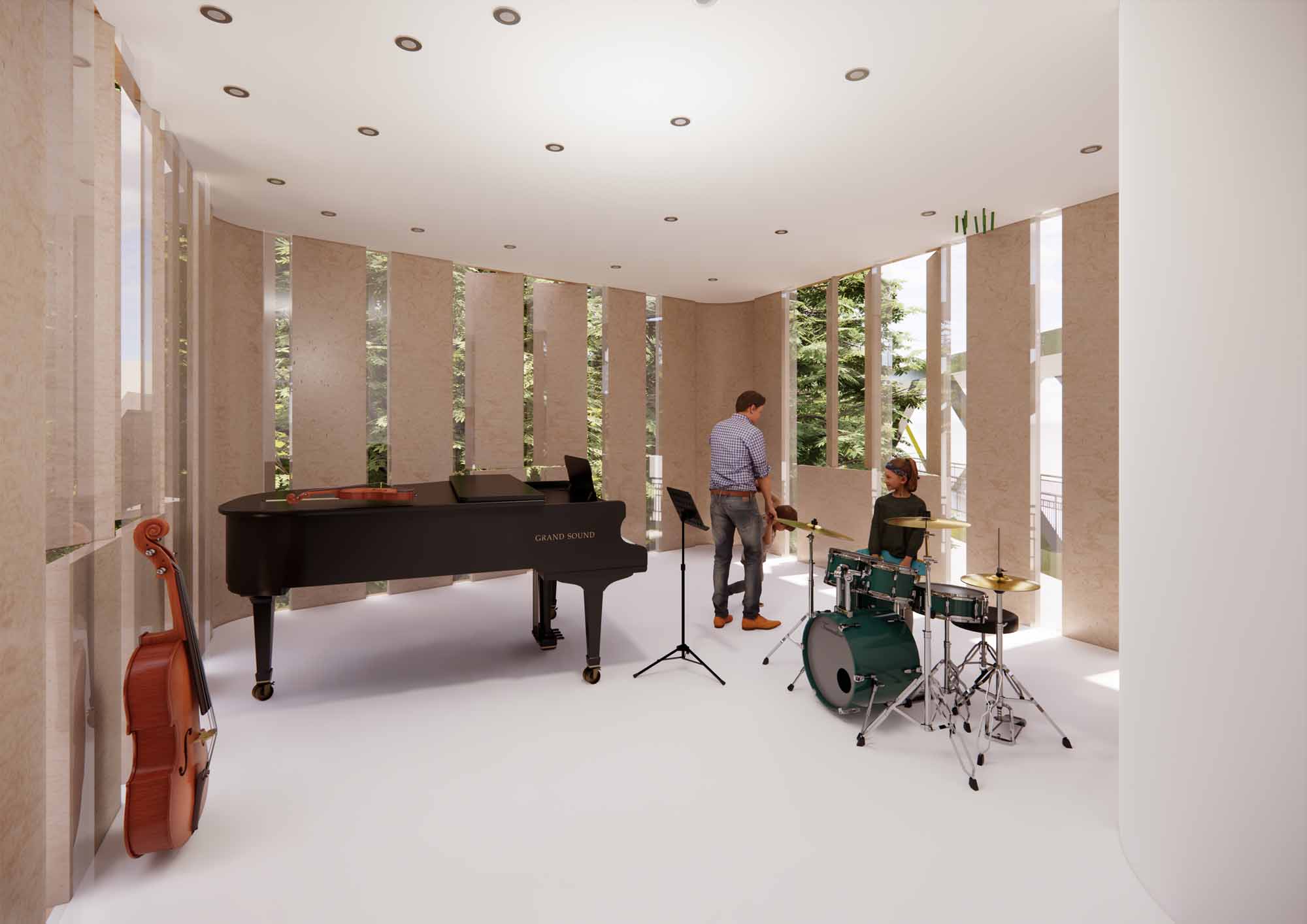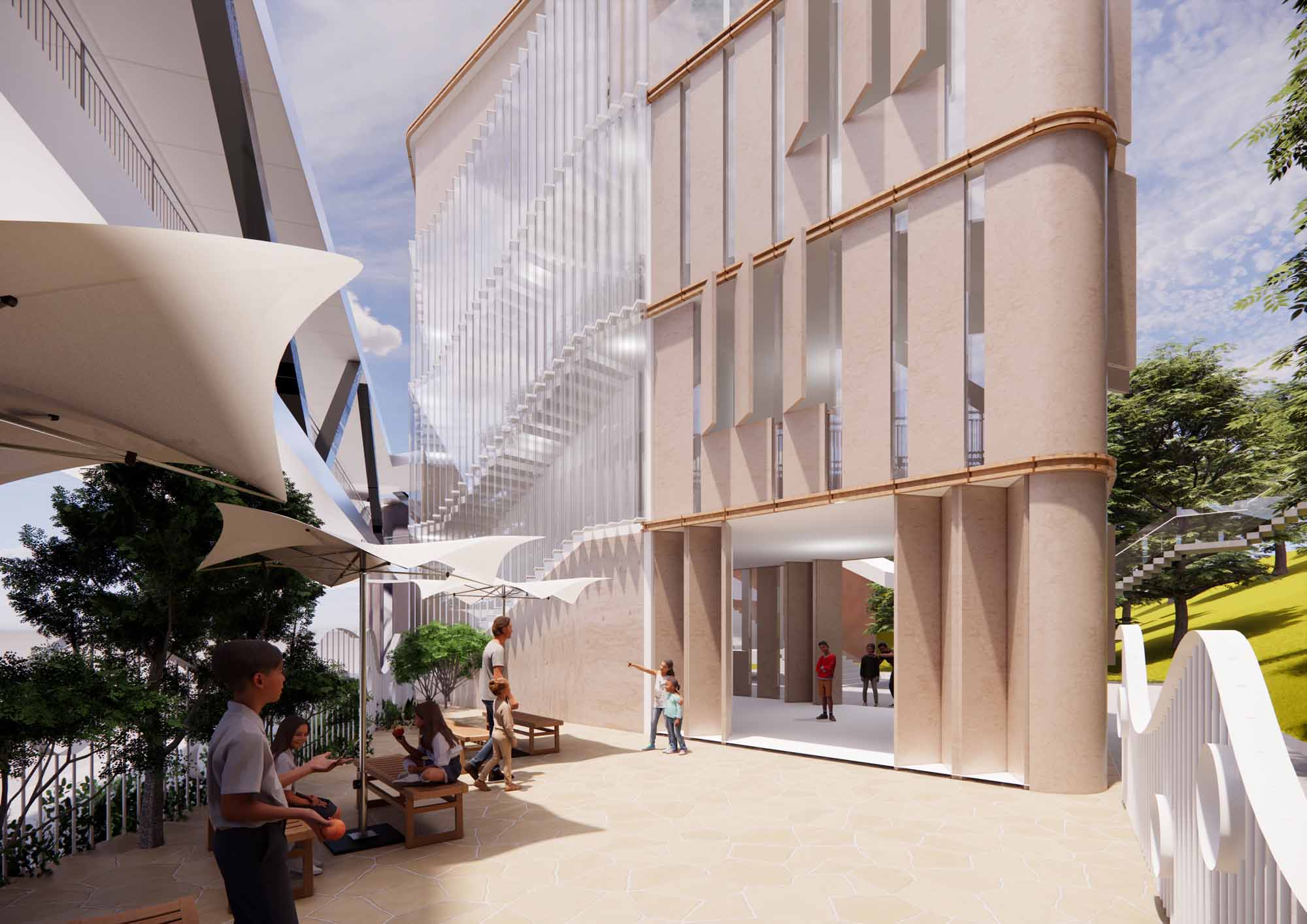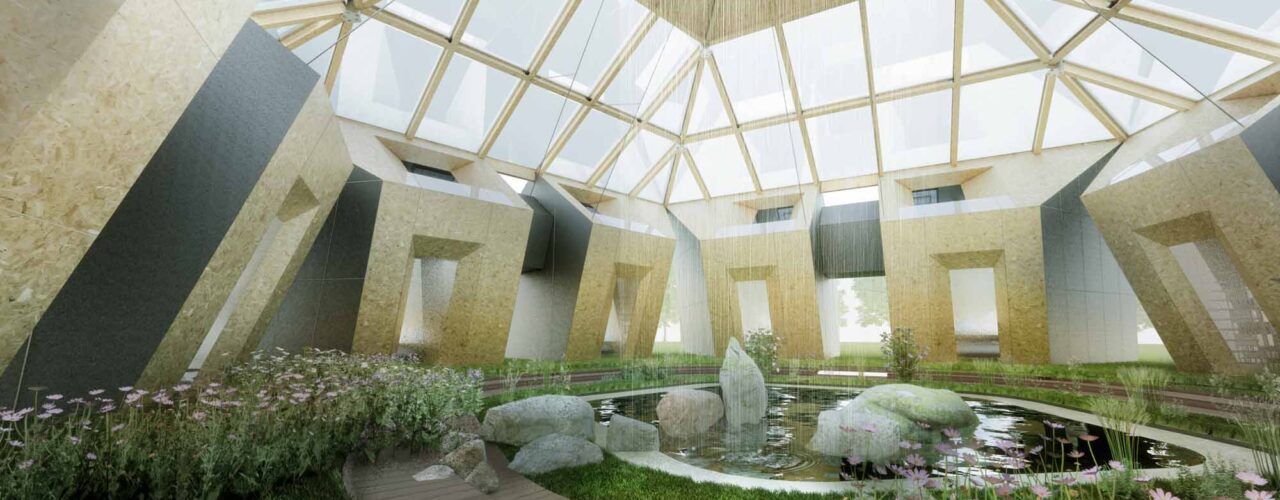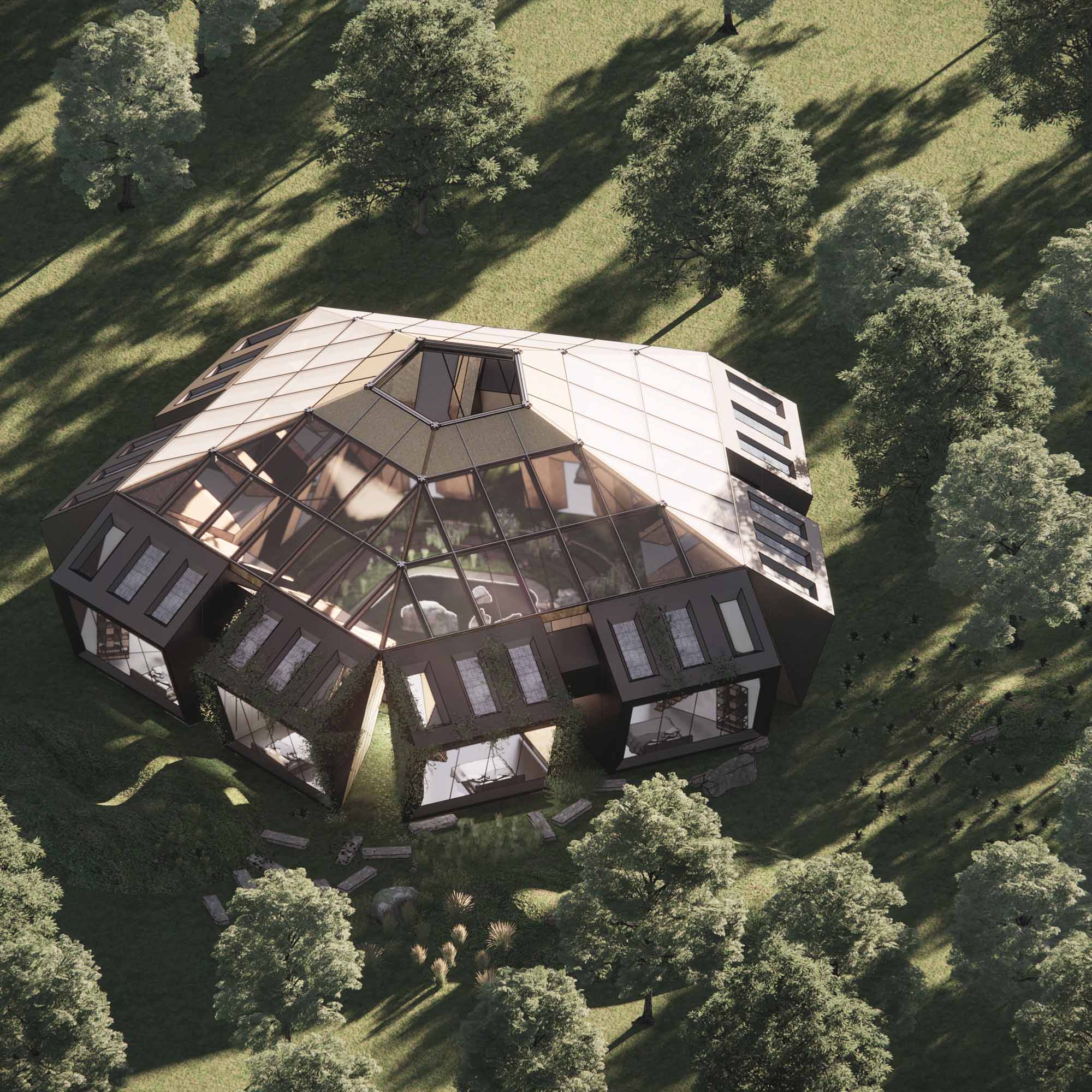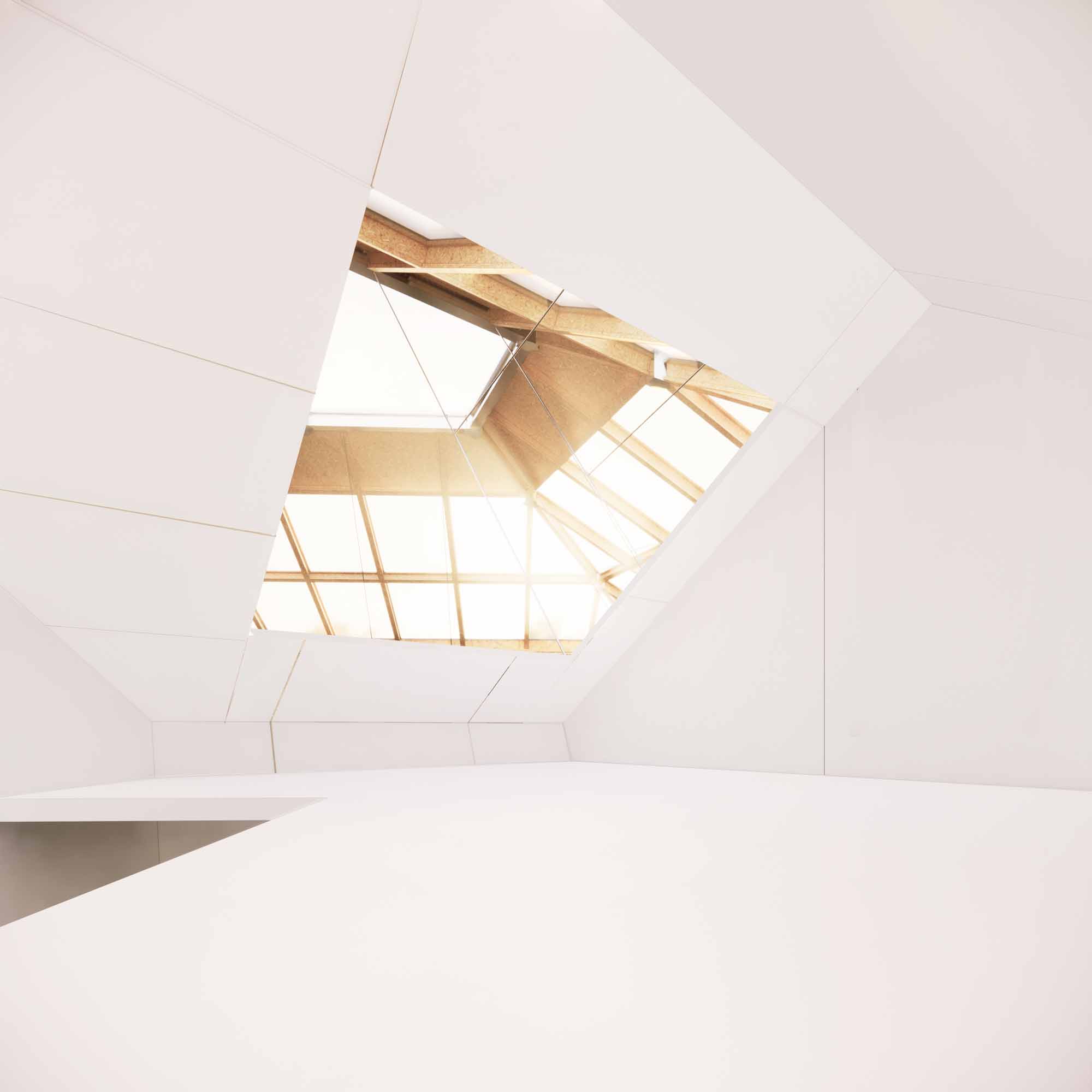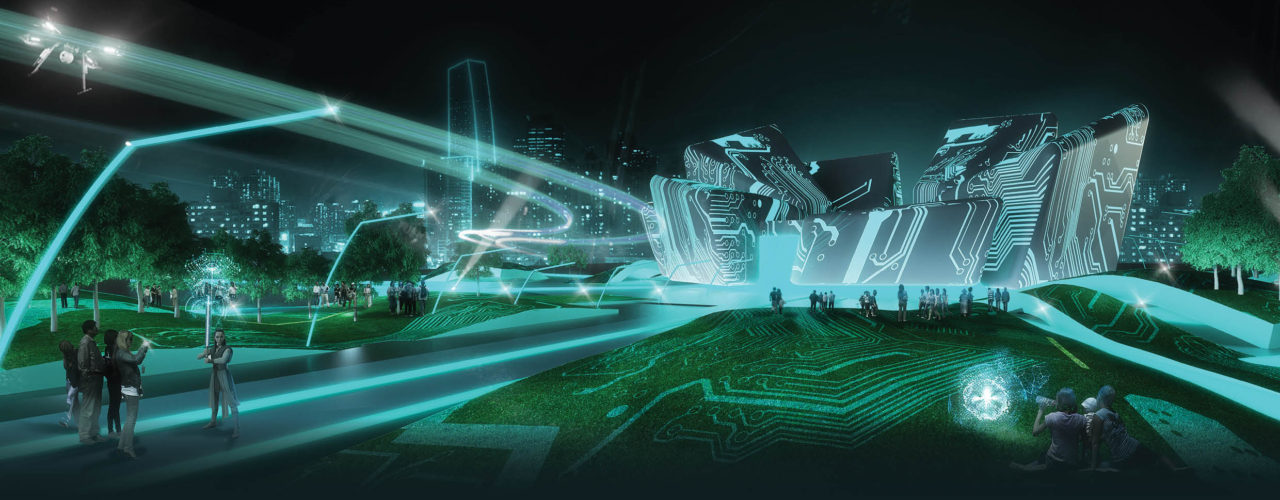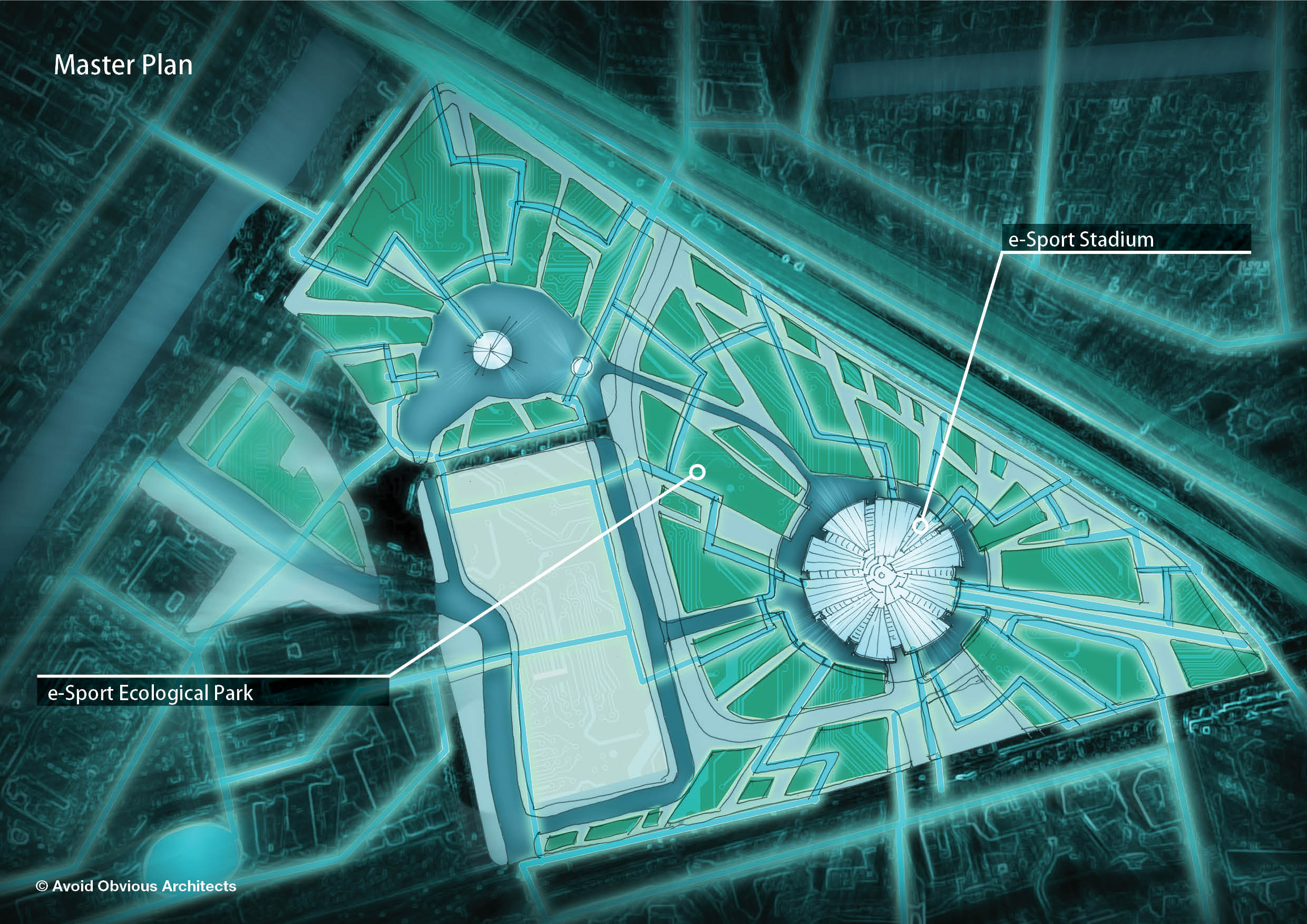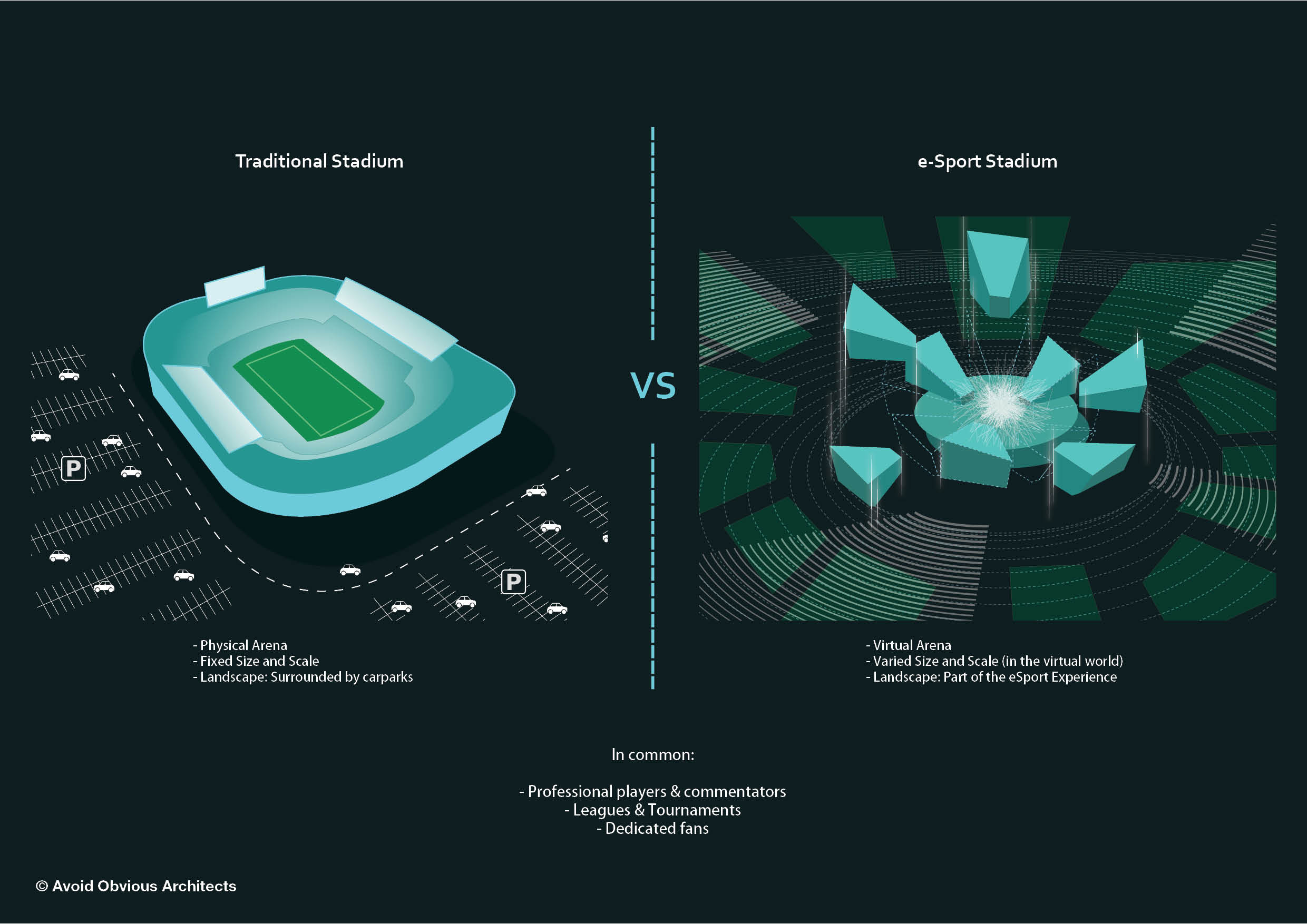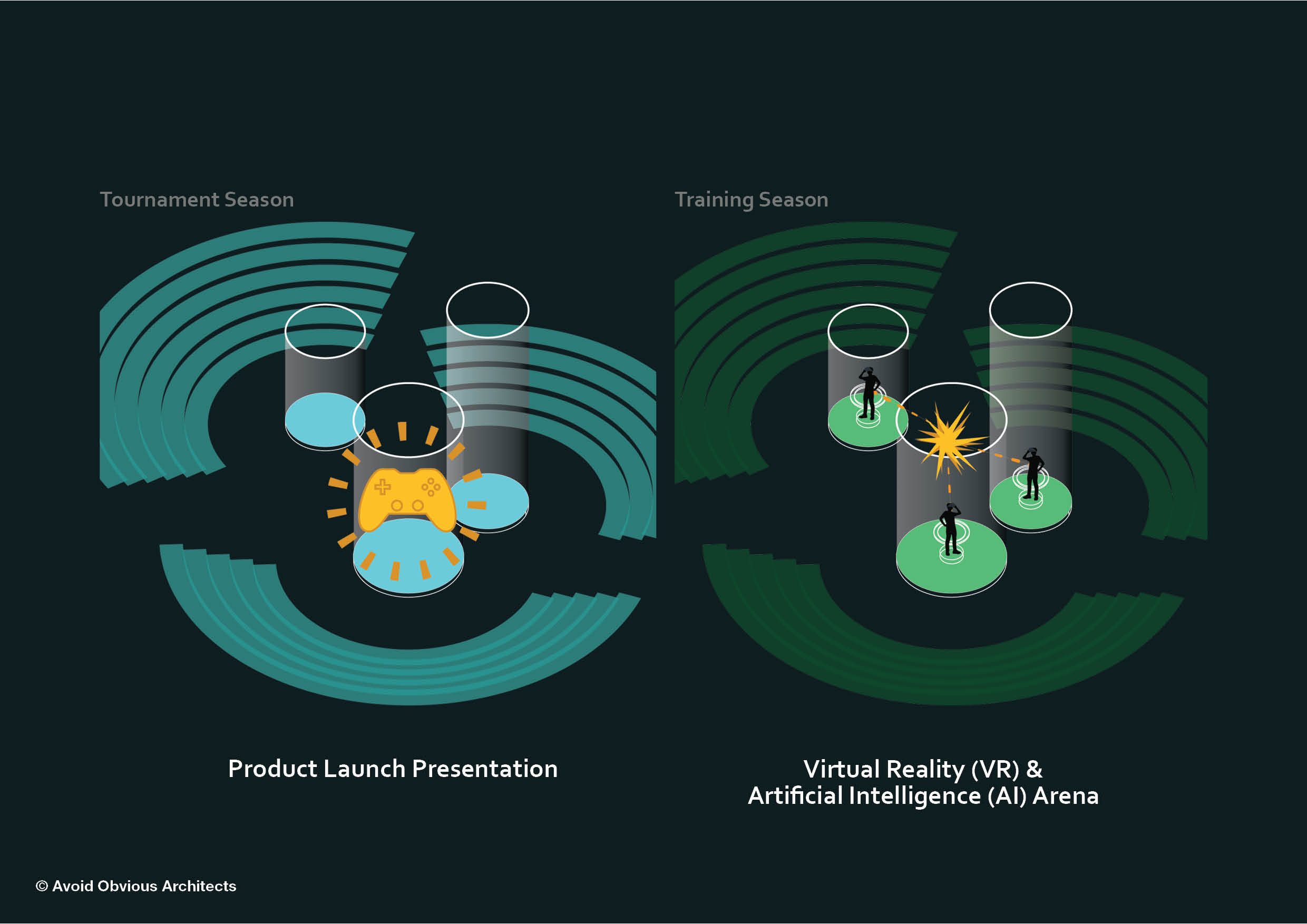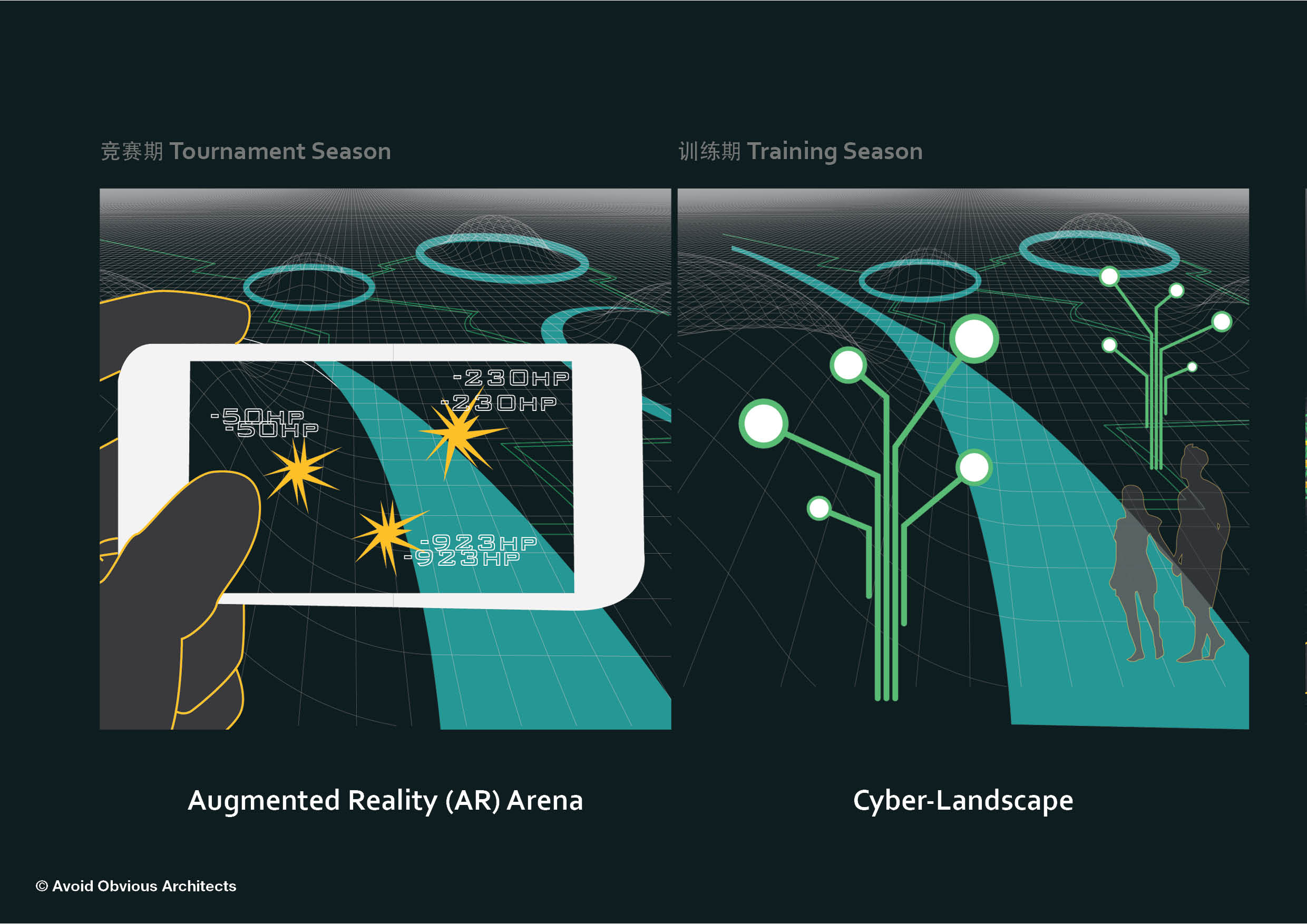Designed as the gateway to the magnificent Greater Mara National Park, our proposal seamlessly blends sustainability, cultural integration, and visitor experience, offering a unique opportunity to explore and engage with the park’s wonders through interactive activities, exhibitions, and an immersive sensory journey. By incorporating the rich history, indigenous culture, and diverse wildlife, we have created a space where visitors can learn, appreciate, and connect with the Mara Triangle Conservancy.

The proposal aims to integrate the new building with all existing buildings and landscape. The initial section provides a captivating exhibition area as a reception with park’s history, indigenous culture, and existing wildlife. As visitors progress, they go through shops, restaurants and classroom. The wall is perforated on the exterior with the interior wall to provide further privacy. The visitors eventually ascend a series of ramps and platforms that elevate them 6m to allow panoramic views from every angle. The tower with climbing ladder extends further up to 18m for people needing a treehouse retreat.
Inspired by the traditional constructions of the Masai Mara region, we have integrated elements such as wood branches, soil brick, and a blend of natural materials reminiscent of the adobe conglomerate. These structures have proven to be remarkably efficient in terms of climate adaptation, sustainability and cost control. While respecting the environment and prioritizing constructability, we keep the structure in a simple grid of 4mx9m to allow construction with low-tech methods.
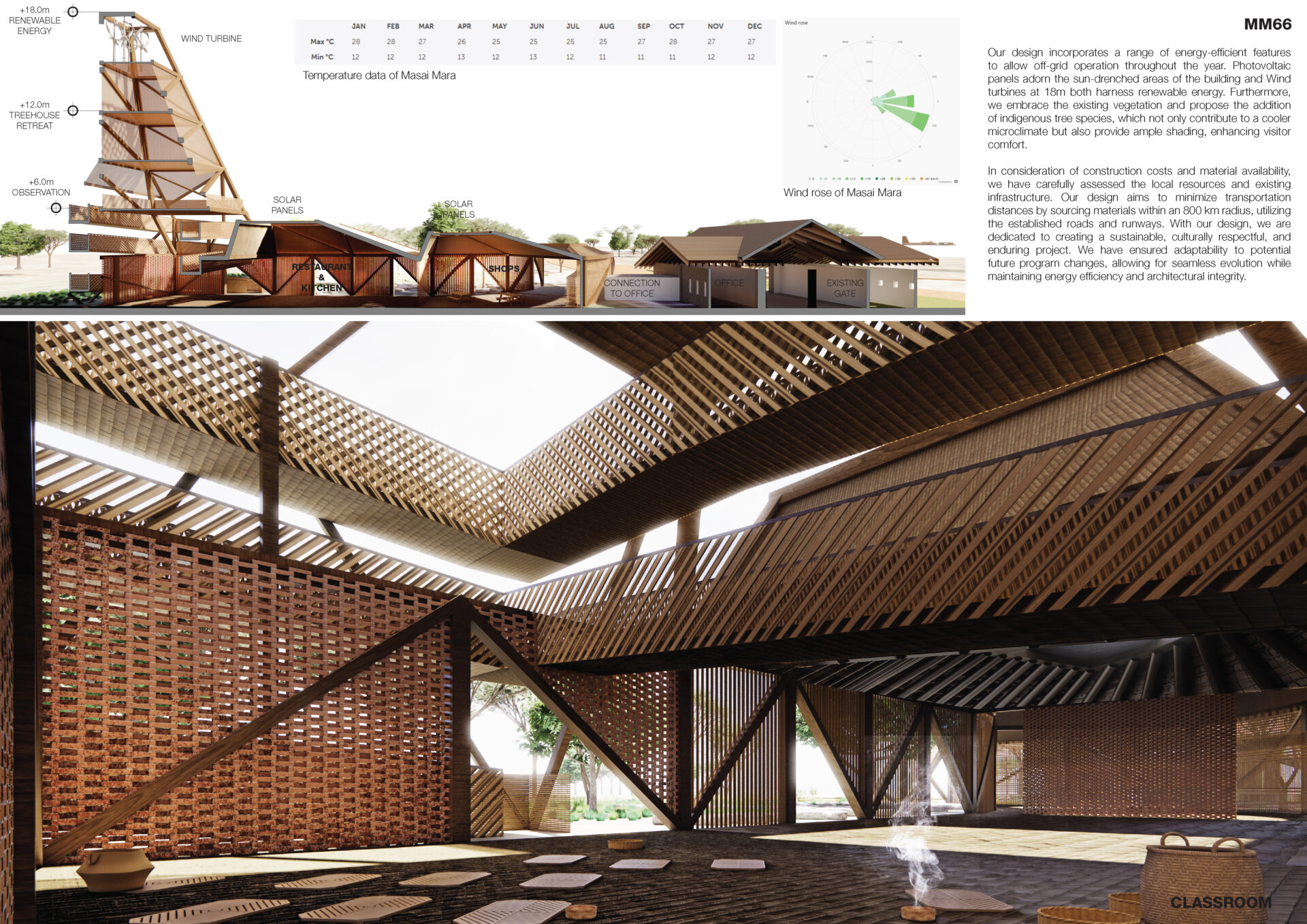
Our design incorporates a range of energy-efficient features to allow off-grid operation throughout the year. Photovoltaic panels adorn the sun-drenched areas of the building and Wind turbines at 18m both harness renewable energy. Furthermore, we embrace the existing vegetation and propose the addition of indigenous tree species, which not only contribute to a cooler microclimate but also provide ample shading, enhancing visitor comfort.
In consideration of construction costs and material availability, we have carefully assessed the local resources and existing infrastructure. Our design aims to minimize transportation distances by sourcing materials within an 800 km radius, utilizing the established roads and runways. With our design, we are dedicated to creating a sustainable, culturally respectful, and enduring project. We have ensured adaptability to potential future program changes, allowing for seamless evolution while maintaining energy efficiency and architectural integrity.
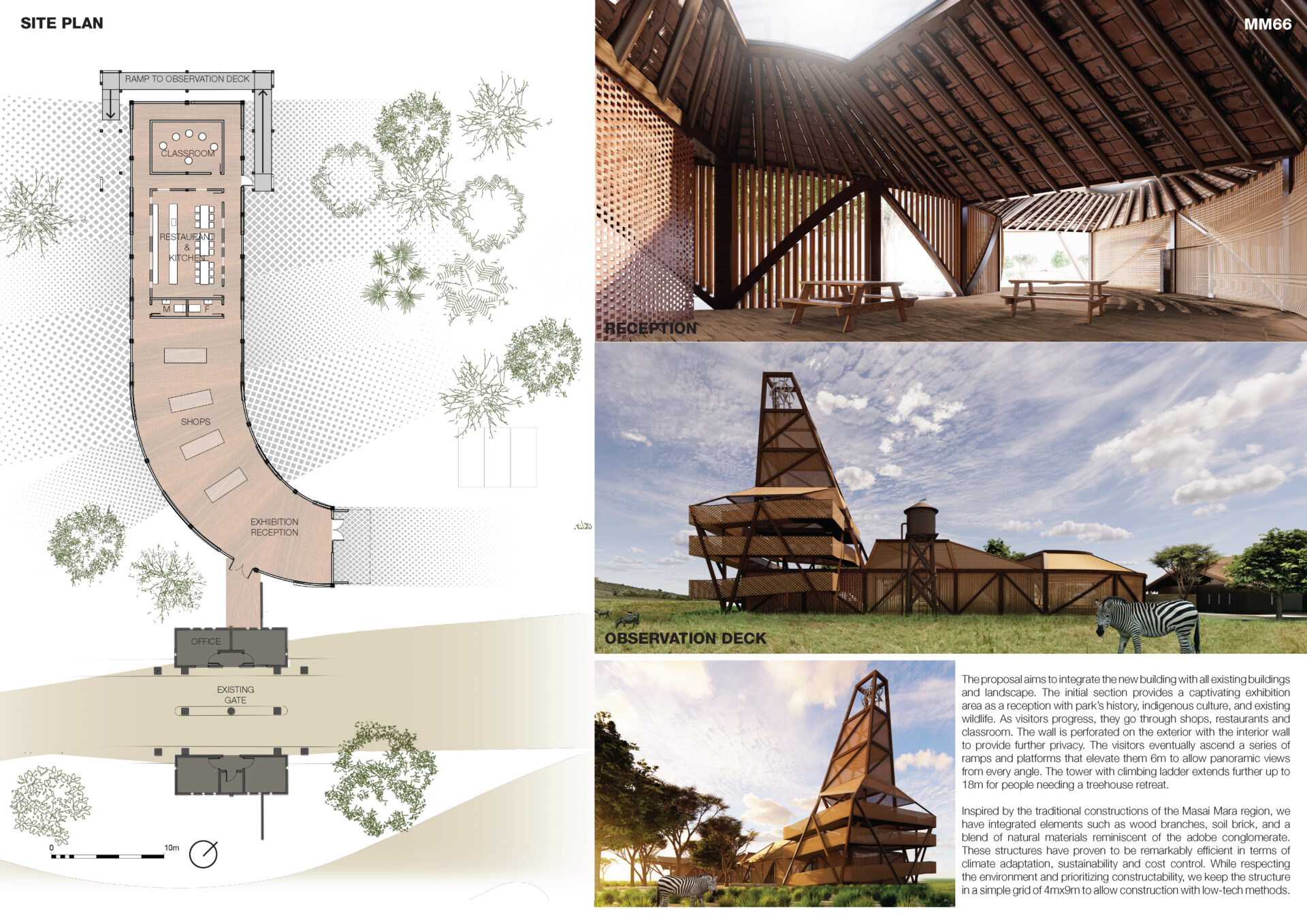
Team
Alvaro Arranz, AIA
Vicky Chan, AIA
Maria Elline Joy Algabre




